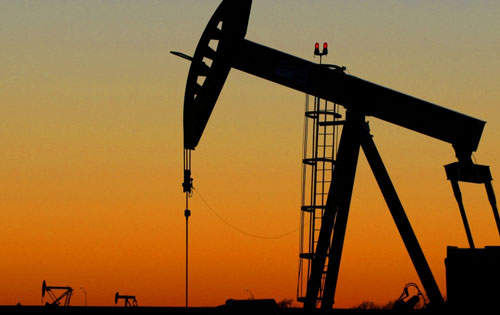As I've said many times, the crucial role Russia played since the late 1990s as the main growth driver for non-OPEC oil production will be sorely missed. But the US Energy Information Agency (EIA) forecast three countries would step up in 2009 to reverse the 2008 fall in production: the US, Brazil, and Azerbaijan. Now one of these countries says their 2009 output will be flat.

Azerbaijan has tripled its production over the last three years to produce ~900,000 barrels of oil per day. Many analysts expected their production would increase another 15% to above 1 million barrels per day (Mbd) this year. But a report came out today that the country now forecasts flat production. It is unclear how much of the change is the lower oil price making new projects unprofitable (the market) and how much is governmental policy. I mention that because Azerbaijan offered to lower their production in cooperation with OPEC back in December if prices continued to slide.
But whether the production stagnation is due to the market or the government doesn't really matter to the global oil market. All that matters is that there will be less oil than anticipated. And for non-OPEC aggregate production, a stagnant Azerbaijan probably means a stagnant non-OPEC. The EIA predicted growth of .15 Mbd in 2009, about the amount Azerbaijan is shaving off their forecast. So, if this report is correct, the burden of offsetting production declines in Mexico, the UK, Norway and elsewhere is squarely on the shoulders of the US and Brazil.
So far, the US and Brazil are showing promise. After a slow start for the year, US oil production is now .2+ Mbd higher than last year. And Brazil is enjoying ~.1 Mbd growth. The question is whether the rapidly falling US rig count and diminished profitability on low prices will send production lower as the months progress. Another X factor is the US hurricane season this summer. If there are fewer direct hits on Gulf of Mexico oil infrastructure, US production seems poised for a big uptick, the first increase since 1991.
Of course, a slight decrease in non-OPEC production may not be a big deal in a year where global oil demand is predicted to fall more than 1 Mbd, but could create challenges further down the road. For now, the latest EIA weekly US petroleum report showed that crude oil supplies are at extremely comfortable levels. Crude inventories are 15% higher than last year and way above the 5-year average for this time of year. And all refined products (gasoline, distillates, and propane) are above average. The deep recession means that oil prices may even fall further this Spring as oil demand falls on lower Northern Hemisphere heating needs, unless OPEC makes another cut in production next month.
The recent potential reemergence of $2 gasoline that I wrote last week was delayed by worse than expected economic news, as I said may happen. Prices peaked at $1.966 a few days ago before falling back to $1.938 today. We'll see how pump prices develop based on OPEC's choices and the scale of our economy's decline.
Bottom Line: Our precarious oil supply situation has not gone away. The fall in global demand is allowing prices to be low for some months. But stagnant production in places like Azerbaijan and declining production in most of the world means energy security combines with climate change to warrant a quick transition to accelerated efficiency and renewables deployment in the US and beyond.